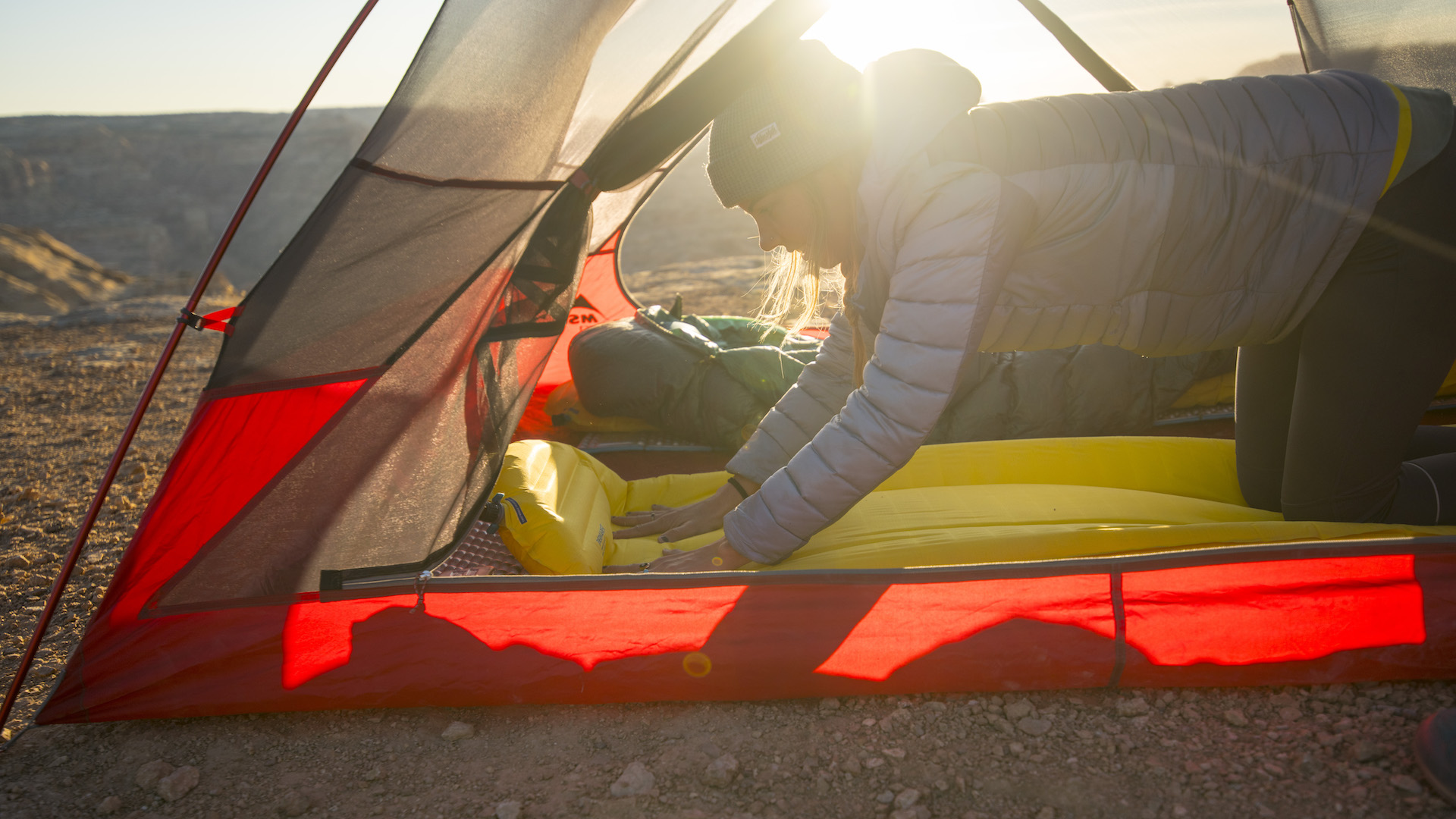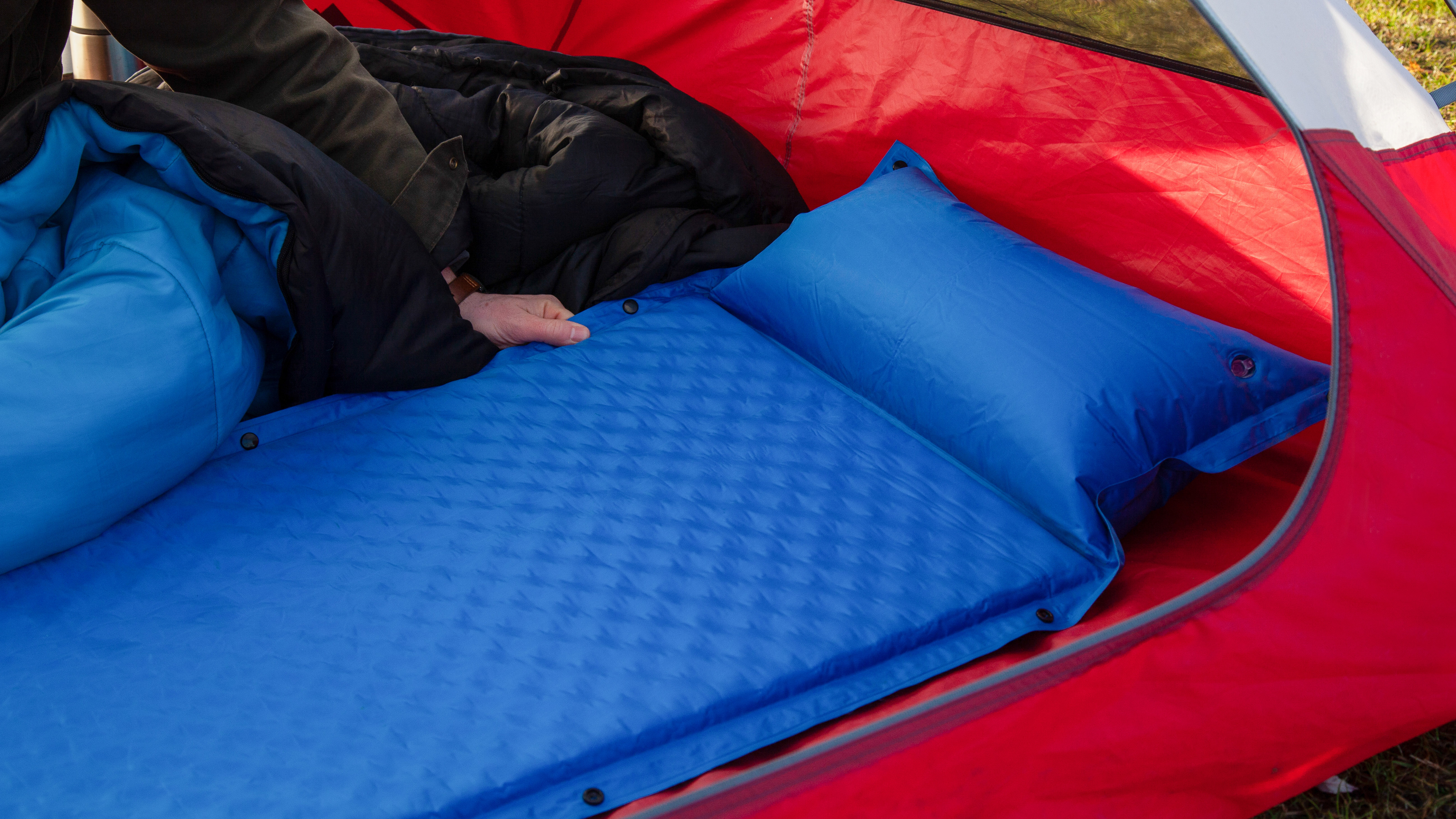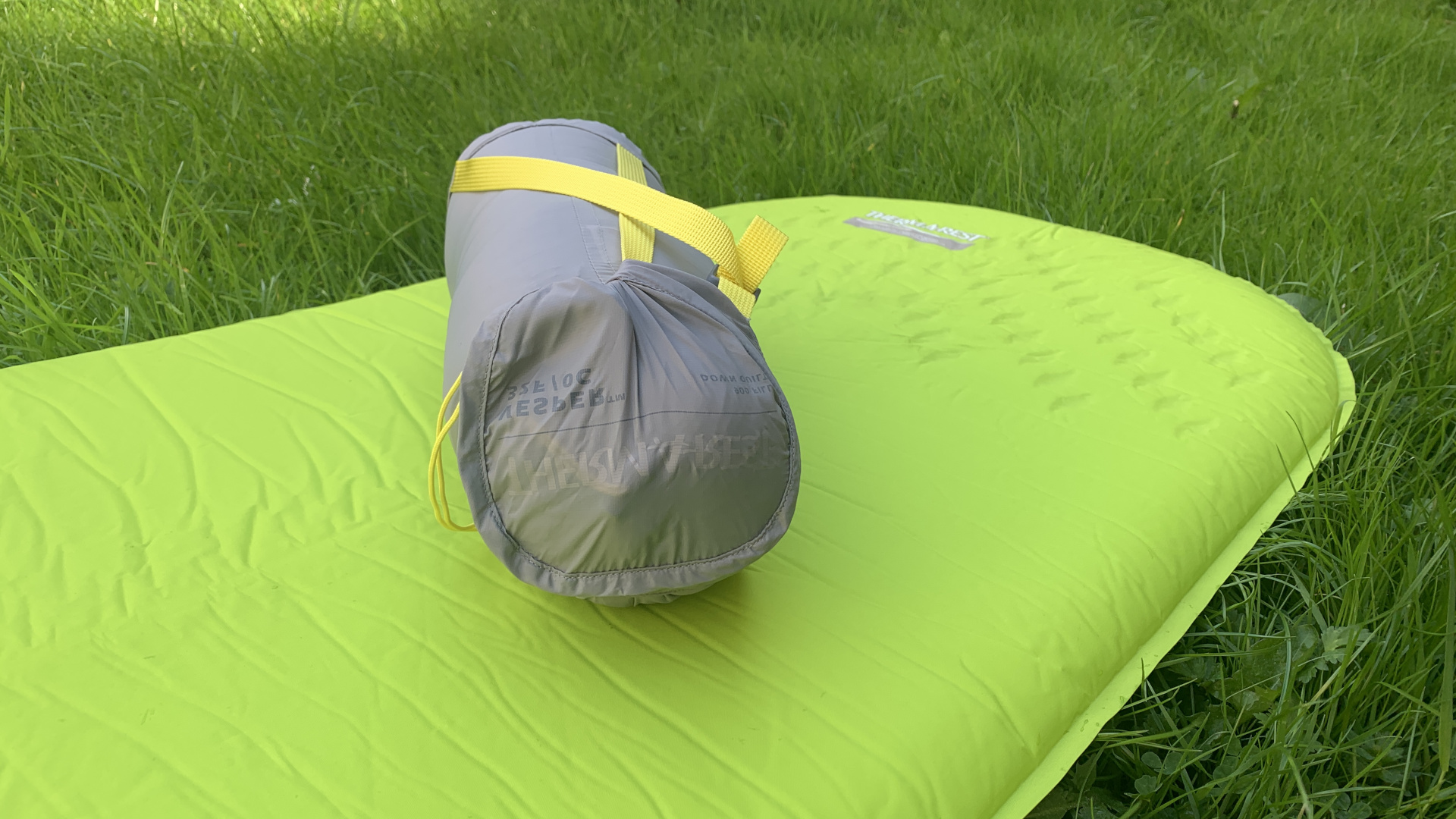What’s the deal with 3/4 length sleeping pads?
We give you the skinny on short length sleeping pads, including their benefits and how to use them

When you’re scouring the internet and local gear shops for a new sleeping pad for backpacking and camping, there are certain factors you’ll be used to looking out for. Obviously, R-value is a major element since that determines how warm you’ll be and therefore how comfortable (or not) a night you’ll have. Then there are other considerations like how wide it is (useful if you’re broad or a side sleeper) and even how long your mat is. If you’re an extra tall hiker, you’ll probably automatically search for an extra long mat. But who are these 3/4 length sleeping pads for? Extra short hikers?
I was quite surprised to discover 3/4 length sleeping pads – also known as short length sleeping pads – when I was on a backpacking trip in the Rockies years back. Four of us had spent a few hours hiking six steep miles into the backcountry and were just setting up camp next to pristine Lake Constantine near Vail when I noticed my friend Luke appeared to have brought a child’s sleeping pad. This seemed odd, in part because he’s at least 5’ 10” tall and mostly because he doesn’t have any children.
After a little probing form the rest of the group, he explained that it was indeed his sleeping pad, but he’d opted for a shorter one for backpacking adventures, saving his full length pad for car camping. Could it really be comfortable? And warm? Naturally, I had a lot of questions about 3/4 length sleeping pads, which I’ll answer in this article to help you decide if you need to trim some fat when it comes to your sleep system.

What’s the point of a 3/4 length sleeping pad?
The main reason for hiking with a 3/4 length sleeping pad is to cut down on weight and packed size, so these pads are typically preferred by weight-conscious fastpackers. As for how much weight you can drop, the Vango Aotrom sleeping pad weighs 14.5 oz but the short version trims 4.5 oz off that, which is equivalent to about two tennis balls. Not a huge amount, but it could definitely matter to you if you’re running and keen on an ultralight approach.
The idea behind the short length sleeping pad is that it’s really your torso, which protects all your precious vital organs, that needs the most insulation while your feet and lower legs can rest on items like your clothes and empty backpack for warmth – just make sure you use insulating clothes like a fleece jacket.
For what it’s worth, Luke says he gets ample warmth by resting his feet and legs, which were already inside his sleeping bag, on top of his pack and some clothes, but then again, he’d only tried it in the summertime. Certainly in warmer climates and summer camping at lower altitudes, you’ll be warm enough.
Finally, because they’re smaller, a shorter sleeping pad will be quicker and easier to inflate, if you’re hiking or running with asthma, which could be a potential draw for some.
All the latest inspiration, tips and guides to help you plan your next Advnture!

How long is a 3/4 length sleeping pad?
How long a 3/4 length sleeping pad is depends on the make and model, but they range from around 47 inches long (120 cm), which is the length of Decathlon’s Inflatable Trekking mattress up to to 55 inches long (140 cm), as in the short version of the Vango Aotrom Sleeping Mat. Check the length of yours before purchasing to make sure you can live with it.

How do you shorten a sleeping pad?
If you already own a sleeping pad you love and want to tailor it for fast and light adventures, believe it or not there are a lot of crazy campers out there in the wilderness of the world wide web with instructional videos to show you how to slice a couple of feet off and use a hot iron to seal the end. I love my Therm-A-Rest ProLite Apex sleeping pad far too much to hack into it with scissors, so I haven't tried this method, but by all account get chopping.
In fact, if you have a hole at one end of yours that doesn’t seem to respond to being patched, this could be a great way to save the majority of your sleeping pad and a few bucks! A better option might be to trim an old-school foam sleeping pad – these aren’t as packable, but they weigh next to nothing and can be attached to your backpack, saving space inside for your sleeping bag and meals.
Julia Clarke is a staff writer for Advnture.com and the author of the book Restorative Yoga for Beginners. She loves to explore mountains on foot, bike, skis and belay and then recover on the the yoga mat. Julia graduated with a degree in journalism in 2004 and spent eight years working as a radio presenter in Kansas City, Vermont, Boston and New York City before discovering the joys of the Rocky Mountains. She then detoured west to Colorado and enjoyed 11 years teaching yoga in Vail before returning to her hometown of Glasgow, Scotland in 2020 to focus on family and writing.

